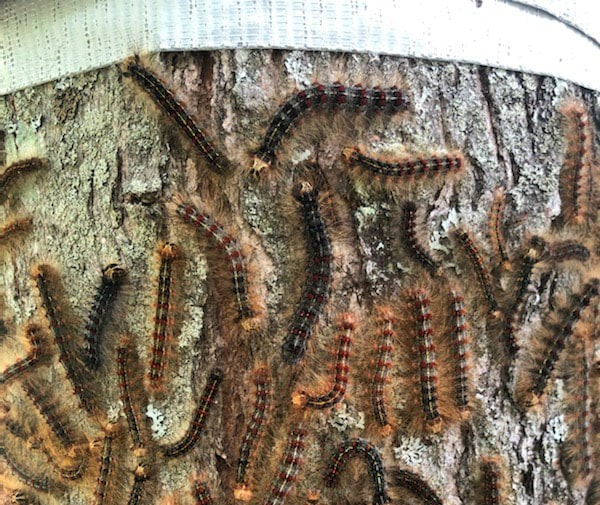|
Learning to prevent those masticating moths
Nobody has likely forgotten the scourge of the Spongy (still hard to get used to the name change) moths that invaded our trees throughout the county last Spring-apparently under an assumed name. Those who were hit hard by the menacing marauders will never forget it. It was brutal watching the defoliation occur and we all could have easily gone about our lives without being overly acquainted with the word frass. Experts agreed it was a perfect storm with the stage of the moth’s cycle and an exceptionally dry Spring combining to make for an ideal environment for the invasion. Understandably folks are a tad touchy as the warmer weather begins to reach our bipeninsular paradise. Hopefully many attended the forum the County Board of Commissioners put on last fall that discussed prevention techniques. If not you can access it on the county site: https://www.newaygocountymi.gov/board_of_commissione/gypsy-moth/ The forum also provided some information on steps toward exploring the possibility of private spraying. While some folks have asked if the county planned to get involved in any large-scale spraying, the initiative has been found to be both prohibitively expensive and logistically unrealistic. “The County has never done an area wide spraying before and it is impractical to do so now,” said Newaygo County Board Chair Bryan Kolk. “Listening to the experts we are told a damp spring like we are experiencing along with some signs of stress on the moth population this past fall gives us great hope for a much clearer 2022 summer.” Yes, this spring has been anything but dry thus far. And while some may bemoan the amount of gray damp days that April has delivered to this point, if it keeps those gluttonous frass flingers from thriving, well then bring on the rain. In the meantime knowledge is power, right? So check out the county forum But for more recent info, register for EGLE’s webinar next Thursday morning, April 14th, 9:00am-10:00am). New name, familiar pest: Preparing for Lymantria dispar (formerly known as Gypsy moth). Here’s the skinny from EGLE: Join an expert panel to explore how Lymantria dispar (formerly Gypsy moth) became a naturalized resident in Michigan’s forests. Dr. Deborah McCullough from Michigan State University, Dr. Steven Katovich of the USDA Forest Service, Susie Iott of MDARD and DNR’s James Wieferich will cover the unusual history of this pest in the United States and here in Michigan, and what you can do to reduce some of the unpleasant impacts of an outbreak. You’ll learn tips to help stressed trees recover from defoliation and options to help reduce the nuisance around your home. Using the tools given at these informational initiatives we can be better prepared to limit the spread of the spongettes. And as a bonus we can take heart in the idea that while rainy April days might be a bit gloomy…? At least this time the stuff falling out of the sky is just water.
0 Comments
Your comment will be posted after it is approved.
Leave a Reply. |
CategoriesArchives
April 2024
|

 RSS Feed
RSS Feed